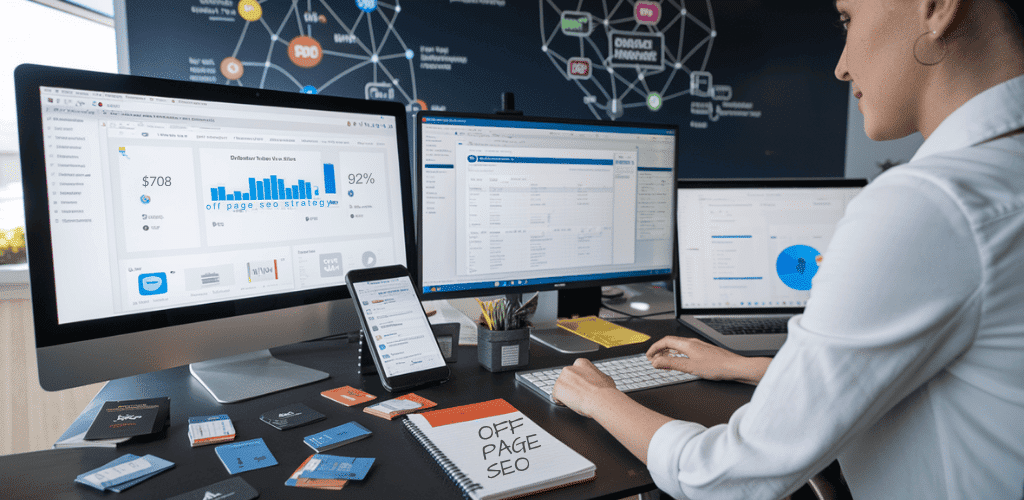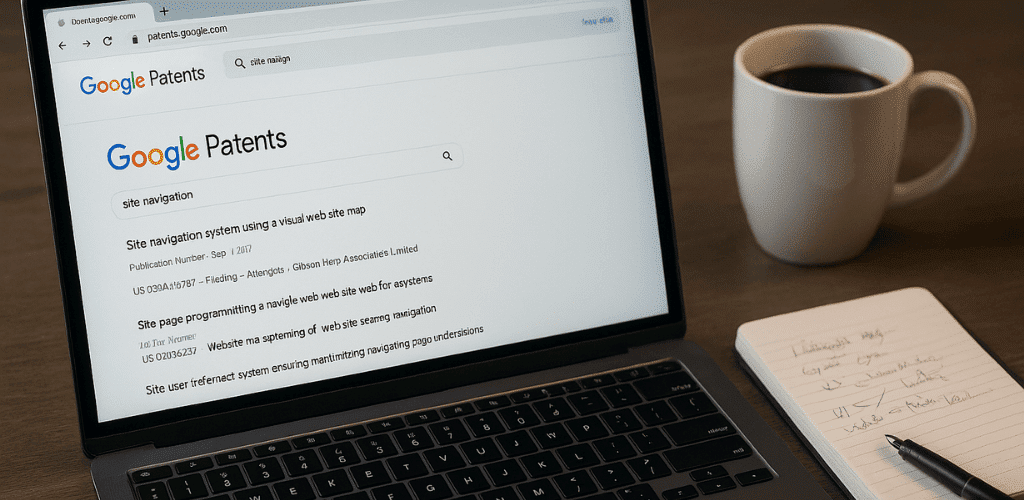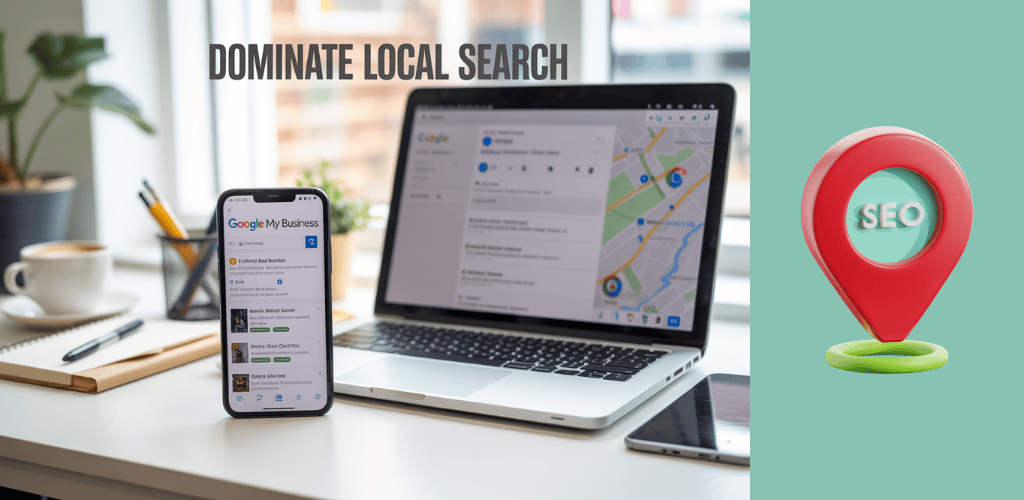In today’s fiercely competitive digital landscape, having great content is no longer enough. While you might be pouring resources into perfecting your website’s on-page elements, the truth is that what happens outside your website could be the difference between page one rankings and digital obscurity. Off-page SEO—the collection of activities conducted beyond your website to enhance search rankings—remains a critical yet often misunderstood component of search engine optimization. With Google’s algorithm continuing to prioritize backlinks and brand reputation signals through what they call “Reputation Research,” businesses that neglect their off-page strategy are essentially competing with one arm tied behind their back.
The challenges of effective off-page SEO have only intensified as the digital ecosystem evolves. Perhaps you’re struggling to acquire quality backlinks, or your brand mentions aren’t translating into measurable results. Maybe your competitors seem to magically appear everywhere online while your digital footprint remains limited. The stakes are high—according to recent studies, websites with strong off-page signals consistently outrank those focusing solely on on-site optimization. But here’s the good news: a strategic, multifaceted approach to off-page SEO can dramatically transform your online visibility and authority, even in the most competitive niches.
In this comprehensive guide, we’ll explore everything from the fundamental principles of off-page SEO to advanced strategies for building digital authority. You’ll discover content-driven approaches that naturally attract backlinks, learn how to leverage strategic partnerships to expand your reach, and understand how social signals contribute to your brand’s overall SEO performance. We’ll also cover local off-page tactics and, crucially, how to measure whether your efforts are actually moving the needle. By the end, you’ll have a clear roadmap for building an off-page SEO strategy that doesn’t just chase algorithms—it builds lasting digital authority that drives sustainable growth.
Table of Contents
Understanding Off Page SEO Fundamentals
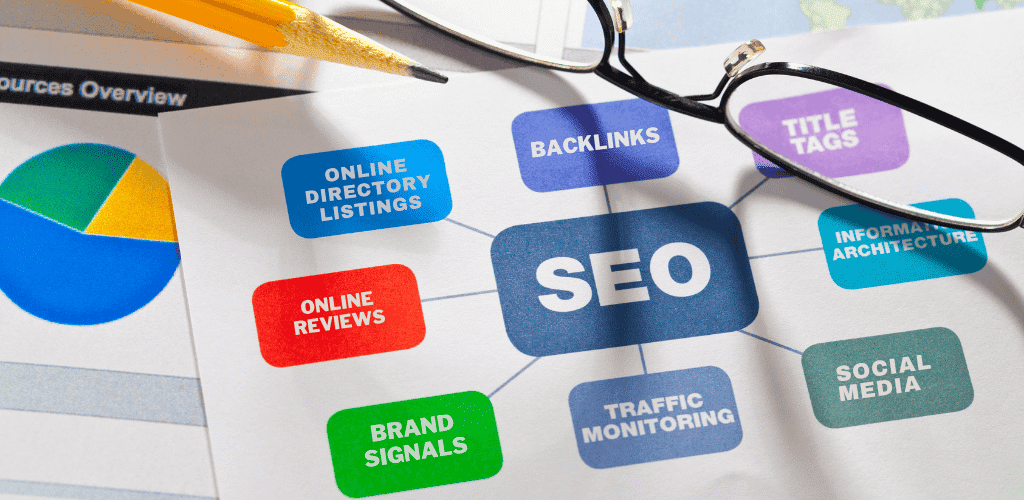
Definition and Key Components of Off Page SEO
Off-page SEO refers to optimization strategies executed outside a website to improve its search engine rankings. Unlike on-page SEO that focuses on elements within your website, off-page SEO is about building your site’s reputation and authority through external signals. The key components of an effective off page SEO strategy include:
- Backlinks: These serve as indicators of a website’s authority, trust, and expertise – similar to citations in academic research
- Online directory listings: Particularly important for local businesses
- Online reviews: Critical for reputation management
- Social signals: Engagement on social media platforms
- Brand signals: Online mentions of your brand across the web
How Off Page SEO Differs from On Page and Technical SEO
While they work together toward the same goal of improving search visibility, these SEO disciplines focus on different areas:
| SEO Type | Focus Area | Examples |
|---|---|---|
| Off-Page SEO | External factors outside your website | Backlinks, brand mentions, social engagement |
| On-Page SEO | Elements within your website | Content quality, title tags, meta descriptions |
| Technical SEO | Website infrastructure | Site speed, mobile-friendliness, indexability |
Both on-page and off-page SEO are essential for enhancing organic search visibility, but they approach this goal from different angles.
Why Off Page SEO Matters for Search Rankings
Off-page SEO is crucial because backlinks remain fundamental to Google’s ranking algorithm. Search engines leverage backlinks to deliver trustworthy and relevant content to users. Additionally, Google considers a site’s reputation through:
- Online reviews from customers
- Mentions on authoritative platforms
- Overall brand visibility and reputation
- Branded searches (when users search specifically for your brand)
These signals collectively form what Google calls “Reputation Research,” which significantly impacts how your site ranks in search results.
Google’s E-E-A-T Principles and Their Impact on Off Page Strategy
E-E-A-T stands for Experience, Expertise, Authority, and Trustworthiness – principles that Google uses to evaluate content quality. Off-page SEO directly influences how Google perceives your site’s E-E-A-T:
- Experience: Demonstrated through real-world expertise mentioned by others
- Expertise: Reinforced when authoritative sites link to your content
- Authority: Built through quality backlinks from trusted “seed sites”
- Trustworthiness: Enhanced by positive online reviews and mentions
Encouraging brand mentions on authoritative sites significantly improves your website’s perceived E-E-A-T, which is vital for search rankings. Tools like Ahrefs, Semrush, and Moz can help track these off-page signals and inform your strategy.
Now that we’ve covered the fundamentals of off-page SEO, let’s explore the essential off-page SEO strategies you can implement to build your website’s authority in the digital landscape.
Essential Off Page SEO Strategies for Building Authority

Now that we’ve covered the fundamentals of off-page SEO, it’s time to explore the strategies that actually build domain authority and improve your website’s standing in search results. Off-page SEO extends beyond basic optimization, focusing on secret strategies SEO experts use to build digital authority.
A. Link Building Techniques That Actually Work
In 2025, effective link building prioritizes quality and relevance over quantity. Strategic guest blogging remains powerful when targeting high-authority, niche-relevant sites with personalized pitches. The “10x content” method significantly improves acceptance rates by creating superior content compared to existing popular topics.
Data-driven campaigns around trending topics yield impressive results. Use tools like Google Trends and Google News to identify relevant content opportunities. Government databases and research organizations provide unique data you can leverage to pitch to journalists.
For instance, if you’re promoting a service like MailChimp, use Ahrefs’ Content Explorer to find listicles mentioning competitors (ConvertKit, Aweber) but not your brand. Your outreach emails should:
- Be personalized to the recipient
- Highlight your product’s unique value
- Reference previous features they’ve covered
- Inquire about inclusion criteria
- Offer additional resources for review
Building relationships with journalists through keyword alerts and platforms like HARO creates ongoing link-building opportunities that simultaneously boost brand visibility.
B. Broken Link Building: Finding and Capitalizing on Opportunities
Broken link building represents a win-win strategy for both parties. This technique involves:
- Identifying dead links on authoritative websites in your industry
- Creating valuable replacement content
- Reaching out to site owners with your solution
The traditional “skyscraper” technique complements this approach perfectly. Identify outdated content with substantial backlinks, create superior versions with fresher data or better visuals, and pitch these as replacements. This strategy not only builds links but establishes you as a helpful resource within your industry.
C. Leveraging Unlinked Brand Mentions for SEO Gains
Brand mentions without links represent missed opportunities for building your off-page SEO profile. Monitor mentions of your brand across the web and reach out to convert these mentions into valuable backlinks. This approach is particularly effective because:
- The site already knows and values your brand
- You’re not asking for new content creation
- It provides mutual benefit by improving their resource accuracy
Maintain high-quality, personalized communication when conducting this outreach. Some innovative marketers are now using AI tools to enhance these efforts while maintaining authenticity.
D. Becoming a Valuable Data Source for Your Industry
Creating original research addresses gaps in existing industry knowledge, making your site a citation-worthy resource. Develop comprehensive studies with visually appealing presentations to enhance shareability.
Map-based graphics and interactive tools have emerged as unique forms of content that naturally attract backlinks. Calculators and specialized tools relevant to your industry not only generate links but provide ongoing value to users.
For maximum impact, strategically distribute your research through:
- Targeted outreach to industry publications
- Social media amplification
- Press releases highlighting key findings
- Engagement with industry influencers
By implementing these authoritative off-page SEO strategies, you’ll build a strong foundation of trust signals that search engines recognize. With this authority-building framework in place, we’ll next explore content-driven approaches to boost your off-page signals through strategic content creation and distribution.
Content-Driven Approaches to Boost Off Page Signals

Content-Driven Approaches to Boost Off Page Signals
Now that we’ve explored essential strategies for building authority through off-page SEO, let’s focus on specific content approaches that can significantly enhance your off-page signals. Content remains the foundation of any successful SEO strategy, especially when designed to attract backlinks and engagement from external sources.
Creating Link-Worthy Long-Form Content
Long-form content has proven to be particularly effective at attracting backlinks compared to shorter pieces. This comprehensive content typically covers topics in greater depth, providing more value to readers and establishing your expertise. When creating long-form content:
- Focus on comprehensive guides that answer complex questions
- Include original research or data analysis
- Provide actionable insights that readers can implement
- Structure content with clear headings and subheadings for better readability
The reference data indicates that longer content tends to naturally attract more links, making it a cornerstone of effective off-page SEO strategy. By producing high-quality, in-depth content, you position your website as a valuable resource worth linking to.
Guest Posting on Authoritative Websites
Guest posting remains one of the most effective off-page SEO tactics when done correctly. Contributing content to authoritative websites in your industry offers multiple benefits:
- Increased visibility to new audiences
- Enhanced credibility through association with respected platforms
- Opportunities for quality backlinks
- Generation of unlinked brand mentions that build recognition
For maximum impact, target publications that have strong domain authority and are closely related to your industry. Your guest posts should provide genuine value rather than simply aiming for link placement, as quality content is more likely to generate positive off-page signals.
Publishing Research-Backed Content That Attracts Shares
Content supported by original research or data analysis has tremendous potential for attracting both backlinks and social shares. This approach works because:
- Original data provides unique value that can’t be found elsewhere
- Statistics and research findings are frequently cited by other content creators
- Data-driven content demonstrates expertise and authority
- Research-based articles generate media attention and industry recognition
When publishing research-backed content, ensure your findings are presented clearly with visually appealing charts or infographics to increase shareability. This type of content directly contributes to improving your website’s perceived expertise, authority, and trustworthiness (E-A-T), which are vital factors for SEO success.
Producing Shareable Visual Assets
Visual content has exceptional sharing potential across various platforms, making it a powerful tool for off-page SEO. Effective visual assets include:
- Infographics that simplify complex information
- Data visualizations that highlight important trends
- Custom illustrations that explain concepts
- Branded images that reinforce your identity
These visual elements not only encourage social sharing but also prompt other websites to embed them in their content, naturally generating backlinks. When creating visual assets, ensure they include your branding and, when appropriate, embed attribution code to maximize link-building potential.
With these content-driven approaches in your arsenal, your off-page SEO efforts will gain significant momentum. Next, we’ll explore how expanding your digital footprint through strategic partnerships can further amplify these results and create new opportunities for building your online authority.
Expanding Your Digital Footprint Through Strategic Partnerships

Now that we’ve covered content-driven approaches to boost off-page signals, it’s time to explore how strategic partnerships can significantly expand your digital footprint and strengthen your off-page SEO strategy.
Collaborating With Larger Brands for Enhanced Visibility
Strategic partnerships with larger brands offer substantial off-page SEO benefits. Rather than working in isolation, collaboration enables you to leverage each other’s strengths and audiences. When identifying potential partners, look for brands with overlapping audiences but non-competing products or services. Use SEO tools to find relevant sites in your industry and verify they maintain consistent content activity.
The key to successful brand collaborations lies in personalized outreach that clearly demonstrates mutual value. Consider co-marketing campaigns where both parties create and promote content together, resulting in shared backlinks and enhanced visibility for both brands. These partnerships should prioritize relevance over reach, ensuring that the relationship makes sense for both audiences.
Participating in Expert Roundups and Industry Interviews
Expert roundups and collaborative articles represent powerful off-page SEO opportunities. By contributing your expertise to industry roundups, you can earn valuable backlinks while positioning yourself as an authority in your field. Similarly, participating in interviews allows you to tap into established audiences and secure quality backlinks through media mentions.
For maximum impact, set clear goals for these collaborations and follow best practices like adhering to timelines and promoting content collaboratively. These activities not only enhance your backlink profile but also improve your brand’s authority and trustworthiness in your industry.
Podcast Outreach and Appearance Strategies
Podcast collaborations offer a unique avenue for expanding your digital footprint. Guest appearances on industry podcasts typically earn you backlinks through show notes while exposing your brand to new, engaged audiences. Consider implementing podcast guest swaps where you host industry figures on your podcast while appearing on theirs.
This approach facilitates cross-promotion and creates multiple opportunities for backlink generation. When pursuing podcast opportunities, focus on shows with audiences that align with your target market and prepare thoroughly to provide genuine value to listeners.
Digital PR and Press Release Distribution
Data collaborations that produce original research can attract significant media attention and generate high-quality backlinks. By partnering with complementary brands to create newsworthy content, you increase your chances of earning press coverage and authoritative links.
Press release distribution should be strategic, focusing on genuinely newsworthy developments rather than routine business updates. When distributing press releases, maintain transparency about sponsored content and avoid over-optimization of anchor text, which can trigger search engine penalties.
With a robust strategy for expanding your digital footprint through partnerships in place, it’s time to consider how social signals and brand building can further strengthen your off-page SEO efforts. These elements work hand-in-hand with strategic partnerships to create a comprehensive approach to improving your site’s authority and visibility.
Social Signals and Brand Building
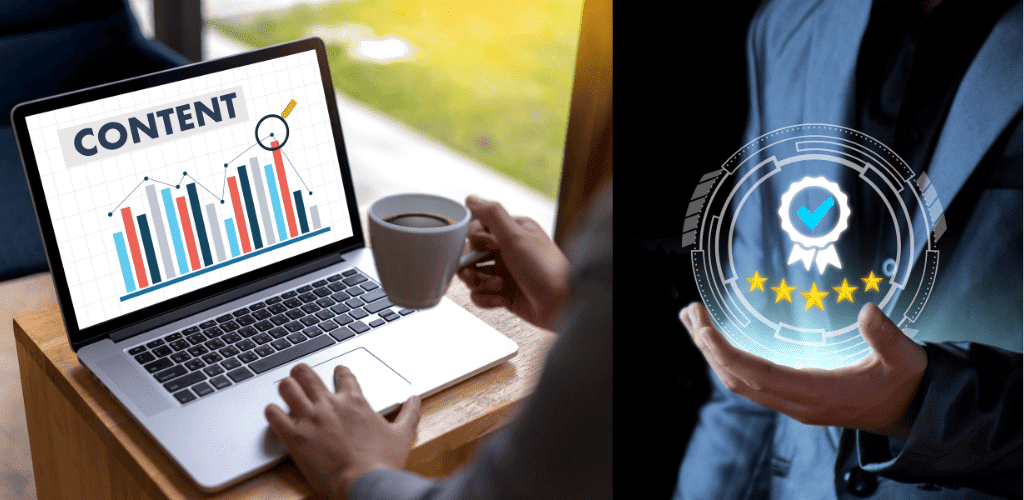
Now that we’ve explored strategic partnerships for expanding your digital footprint, let’s delve into how social signals can strengthen your off-page SEO strategy while building your brand presence.
While social signals—likes, shares, and comments—aren’t direct ranking factors according to Google’s John Mueller, they play a crucial indirect role in your off-page SEO efforts. These signals contribute to brand reputation and visibility, which ultimately can improve search performance over time.
Monitoring and Improving Branded Searches
Branded searches significantly impact your SEO performance. When users specifically search for your brand name, it signals to search engines that your brand has recognition and authority. Kyle Risley from Shopify notes that increased brand popularity through social engagement leads to more branded search queries, positively affecting rankings over time.
To improve branded searches:
- Create consistently high-quality content that represents your brand values
- Monitor mentions of your brand across platforms
- Address customer feedback promptly to maintain positive brand sentiment
- Implement schema markup to connect your social profiles with your website
Leveraging YouTube Marketing for Brand Awareness
YouTube offers powerful opportunities for expanding your brand’s visibility within your off-page SEO strategy:
- Create valuable video content that addresses your audience’s needs
- Optimize video titles, descriptions, and tags with relevant keywords
- Encourage engagement through comments and shares
- Cross-promote videos across your other social channels
YouTube content can appear in special SERP features, increasing your brand’s visibility in search results and driving additional traffic to both your video content and website.
Social Media Engagement Strategies
Effective social engagement strategies include:
- Content distribution: Share your website content across different platforms to maximize reach
- Interactive posts: Create polls, questions, and discussions that encourage audience participation
- Platform optimization: Tailor content to each platform’s unique audience and format
- Influencer collaborations: Partner with industry influencers to expand reach
- Consistent posting schedule: Maintain regular activity to build audience expectations
Remember that while social media links typically carry “nofollow” tags (preventing direct SEO benefit), they still drive traffic and enhance brand visibility—both valuable for your off-page SEO strategy.
Setting Up Effective Brand Tracking Systems
To measure the impact of your social signals on brand building:
- Monitor social engagement metrics across platforms
- Track brand mentions using social listening tools
- Analyze traffic from social channels to your website
- Measure the correlation between social campaigns and branded search volume
- Watch for increases in direct website traffic, which often indicates stronger brand recognition
Strong social proof—demonstrated through high engagement on your content—enhances perceived quality and can improve click-through rates from search results.
With these social signal strategies strengthening your brand presence online, you’ll be well-positioned to extend your off-page SEO efforts to local markets. Next, we’ll explore Local Off-Page SEO Tactics that will help you connect with audiences in specific geographic areas.
Local Off Page SEO Tactics
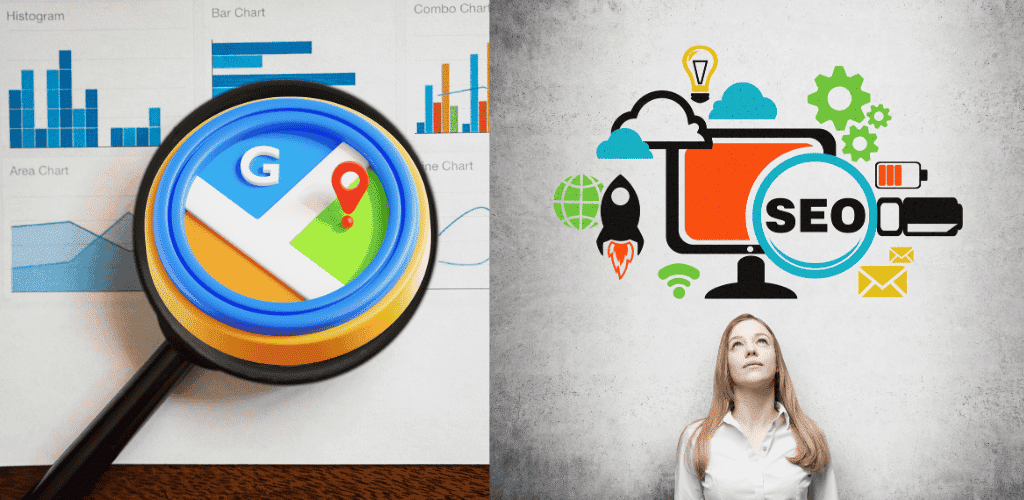
Now that we’ve explored how social signals contribute to your brand’s authority, let’s focus on another crucial aspect of your off-page SEO strategy – local optimization. For businesses serving specific geographic areas, local off-page SEO tactics are essential for connecting with nearby customers actively searching for your products or services.
Optimizing Google Business Profile for Local Visibility
Your Google Business Profile (formerly Google My Business) serves as the cornerstone of local off-page SEO. This powerful tool directly influences your visibility in local search results, including the coveted “Map Pack” positions. To maximize its effectiveness:
- Ensure complete profile information with accurate business details
- Select appropriate business categories that match user search intent
- Add high-quality photos of your business, products, and services
- Create posts regularly to keep your profile active and engaging
- Utilize all available features like Q&A, messaging, and booking options
A well-optimized Google Business Profile significantly improves your chances of appearing in relevant local searches, driving both online and foot traffic to your business.
Managing NAP Citations Across the Web
NAP (Name, Address, Phone number) consistency is critical for local off-page SEO success. Search engines use these citations to validate your business’s legitimacy and determine local search rankings. To effectively manage your NAP:
- Maintain absolute consistency in how your business information appears across all platforms
- Submit your business to prominent directories like Yelp, Yellow Pages, and Bing Places for Business
- Regularly audit your citations to identify and correct discrepancies
- Include relevant keywords and appropriate categories in directory listings
- Use citation management tools to streamline monitoring and updates
Even minor inconsistencies in your NAP information can confuse both search engines and potential customers, potentially harming your search rankings.
Generating and Responding to Customer Reviews
Online reviews play a dual role in local off-page SEO – they influence both consumer perceptions and search engine rankings. To leverage reviews effectively:
- Implement a systematic approach to request feedback from satisfied customers
- Create simple processes that make leaving reviews easy and convenient
- Respond promptly to all reviews, both positive and negative
- Address concerns professionally and demonstrate your commitment to customer satisfaction
- Showcase positive reviews on your website and social media channels
Reviews serve as powerful trust signals that enhance your E-E-A-T (Experience, Expertise, Authoritativeness, and Trustworthiness) rating with search engines.
Hosting Events to Generate Local Brand Mentions
Creating buzz through local events offers unique opportunities to earn backlinks, mentions, and citations. Consider these approaches:
- Organize workshops, seminars, or community gatherings related to your industry
- Partner with complementary local businesses for co-hosted events
- Sponsor local charitable causes or community initiatives
- Create newsworthy events that attract media coverage
- Document events through blog posts, photos, and videos to extend their SEO value
Events generate organic conversations about your brand across multiple platforms, creating valuable signals that boost your local SEO performance.
With these local off-page SEO tactics implemented, you’ll want to track their effectiveness. In the next section, we’ll explore how to measure your off-page SEO success using key performance indicators and analytics tools to ensure your strategy delivers measurable results.
Measuring Your Off Page SEO Success
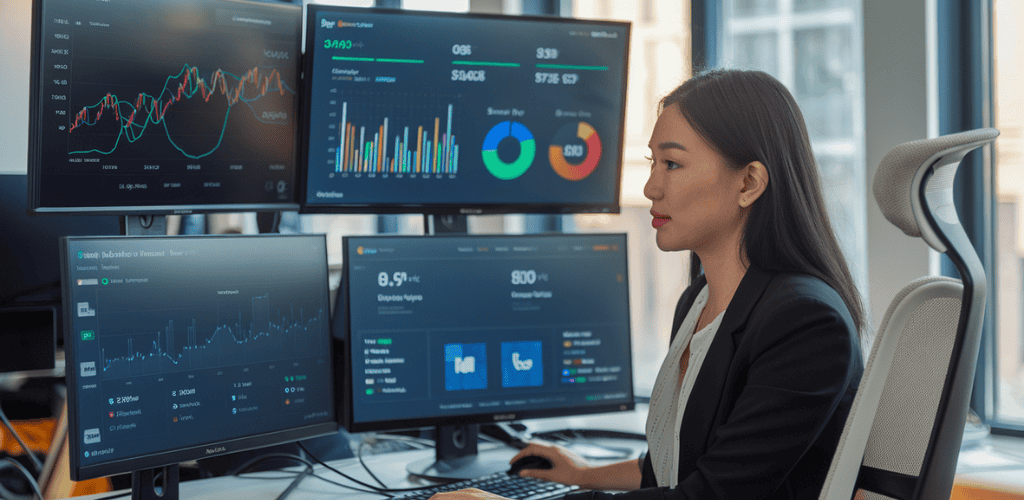
Now that we’ve explored local off-page SEO tactics to boost your regional presence, it’s essential to understand how to measure the effectiveness of your overall off-page SEO strategy. Without proper measurement, you won’t know if your efforts are yielding results or if adjustments are needed.
Key Metrics to Track for Off Page Performance
Effective off-page SEO goes beyond simply building backlinks; it requires monitoring several key metrics:
- Backlink Quantity and Quality: While the number of backlinks matters, high-quality links from reputable sources carry significantly more weight than numerous low-quality ones.
- Domain Authority (DA) and Page Authority (PA): These metrics developed by Moz serve as predictive measures of your website’s ranking potential based on the strength and quality of your backlinks.
- Referring Domains: The number of unique domains linking to your site reflects how widely your content is recognized and valued.
- Social Signals: Engagement on social media platforms can indirectly boost SEO performance by enhancing content visibility and generating more backlinks.
- Brand Mentions: Both linked and unlinked mentions contribute to your brand’s authority and are vital for assessing off-page SEO impact.
- Organic Traffic: This non-paid traffic from search engines indicates SEO success when trending upward.
- Traffic Value: This metric quantifies what your organic clicks would cost if they were paid, highlighting the importance of ranking for high-intent “money keywords.”
- Organic Traffic Conversions: Tracking significant user actions provides a direct connection to revenue.
Tools for Monitoring Backlinks and Brand Mentions
Several powerful tools can help you monitor your off-page SEO performance:
- Ahrefs: Offers comprehensive backlink tracking and insights into Domain Authority and organic traffic.
- SEMrush: Provides detailed reports on backlinks and brand mentions, along with features for keyword research and competitor analysis.
- Moz Link Explorer: Focuses on backlink tracking and analyzing link profiles.
- Google Alerts: Allows for monitoring brand mentions across the web.
- BuzzSumo: Useful for tracking social signals and content performance on social media.
- Google Analytics: Helps measure off-page SEO success by enabling monitoring of referral and social traffic, analyzing conversion rates, and deriving insights into overall SEO performance.
Analyzing Competitor Off Page Strategies
Understanding your competitors’ off-page strategies can provide valuable insights:
- Identify which domains are linking to your competitors but not to you
- Analyze the quality and relevance of their backlinks
- Examine their social media presence and engagement
- Review their brand mentions across the web
- Compare their domain authority to yours
This competitive analysis helps identify opportunities and gaps in your own strategy.
Adjusting Your Strategy Based on Performance Data
Regular monitoring allows you to make data-driven adjustments to your off-page SEO approach:
- Evaluate the quality of new backlinks through relevance, authority of linking domains, anchor text, link placement, and engagement levels
- Shift resources toward strategies that show the best results
- Address areas where competitors are outperforming you
- Refine your social media approach based on engagement metrics
- Adjust your content strategy to attract more high-quality backlinks
While the direct impact of social signals on SEO rankings is debated, their role in amplifying content reach is undeniable. Tracking engagement metrics and analyzing traffic from social media can help determine the effectiveness of your social strategies.
With a solid understanding of how to measure your off-page SEO success, you’ll be better equipped to answer specific questions about implementing these strategies. In our next section, we’ll address frequently asked questions about off-page SEO to help resolve any remaining concerns about building an effective strategy.
FAQ’s
Now that we have covered how to measure your off-page SEO success, let’s address some common questions that website owners frequently ask about implementing an effective off-page SEO strategy.
What is the difference between on-page and off-page SEO?
On-page SEO involves optimizing elements within your website, such as content, HTML tags, and site structure. Off-page SEO encompasses activities conducted outside your website to improve its search engine ranking, including link building, social media marketing, guest blogging, and building local citations.
Which off-page SEO factors have the most impact on rankings?
According to the reference materials, high-quality backlinks remain one of the most influential off-page SEO factors. Other significant factors include social signals, brand mentions, local citations (for businesses with a physical location), and user engagement metrics.
How long does it take to see results from off-page SEO efforts?
Off-page SEO is typically a long-term strategy. Building relationships and acquiring quality backlinks can be time-consuming. Results may take several months to materialize, depending on your industry’s competitiveness and the consistency of your efforts.
Should I focus on quantity or quality when building backlinks?
Quality should always be prioritized over quantity. A few high-authority, relevant backlinks are far more valuable than numerous low-quality links. Focus on acquiring backlinks from reputable websites within your niche or related industries.
What are do-follow and no-follow links, and do both matter?
Do-follow links pass authority from one site to another, directly impacting search rankings. No-follow links don’t pass authority but still provide value through increased visibility, referral traffic, and maintaining a natural link profile. A healthy off-page SEO strategy should include both types.
How important are social signals for off-page SEO?
While social signals (likes, shares, comments) aren’t direct ranking factors, they indirectly impact your SEO by increasing brand visibility, driving traffic, and creating opportunities for natural link building. An active social media presence is considered an essential component of comprehensive off-page SEO.
Is local SEO different from standard off-page SEO?
Yes, local SEO focuses specifically on improving visibility in local search results. It involves strategies like optimizing Google Business Profile, obtaining citations in local directories, collecting customer reviews, and targeting location-specific keywords. This is particularly important for businesses serving specific geographic areas.
What off-page SEO strategies work best for small businesses?
Small businesses should focus on building community engagement, establishing local citations, encouraging customer reviews, and creating valuable content that naturally attracts backlinks. These approaches are typically more accessible and cost-effective than attempting to compete for high-volume keywords.
Conclusion
Mastering Off-Page SEO: The Path Forward
Building a winning off-page SEO strategy requires a comprehensive approach that extends beyond your website. From constructing quality backlinks and establishing strategic partnerships to leveraging content marketing and social signals, these external efforts significantly impact how search engines perceive your site’s authority and trustworthiness. Remember that Google’s E-E-A-T principles—Experience, Expertise, Authoritativeness, and Trustworthiness—serve as the foundation for how quality raters assess your digital presence.
As you implement the strategies outlined in this guide, focus on measuring your progress using tools like Google Search Console and dedicated link building platforms. Track improvements in your domain authority, monitor brand mentions, and analyze the quality of your backlinks. Whether you’re optimizing for local search through consistent NAP citations and reviews, or expanding your reach through guest posting and podcast appearances, a well-executed off-page SEO strategy will yield significant long-term benefits for your website’s visibility and credibility. Start implementing these tactics today, and watch as your digital footprint grows alongside your search rankings.

